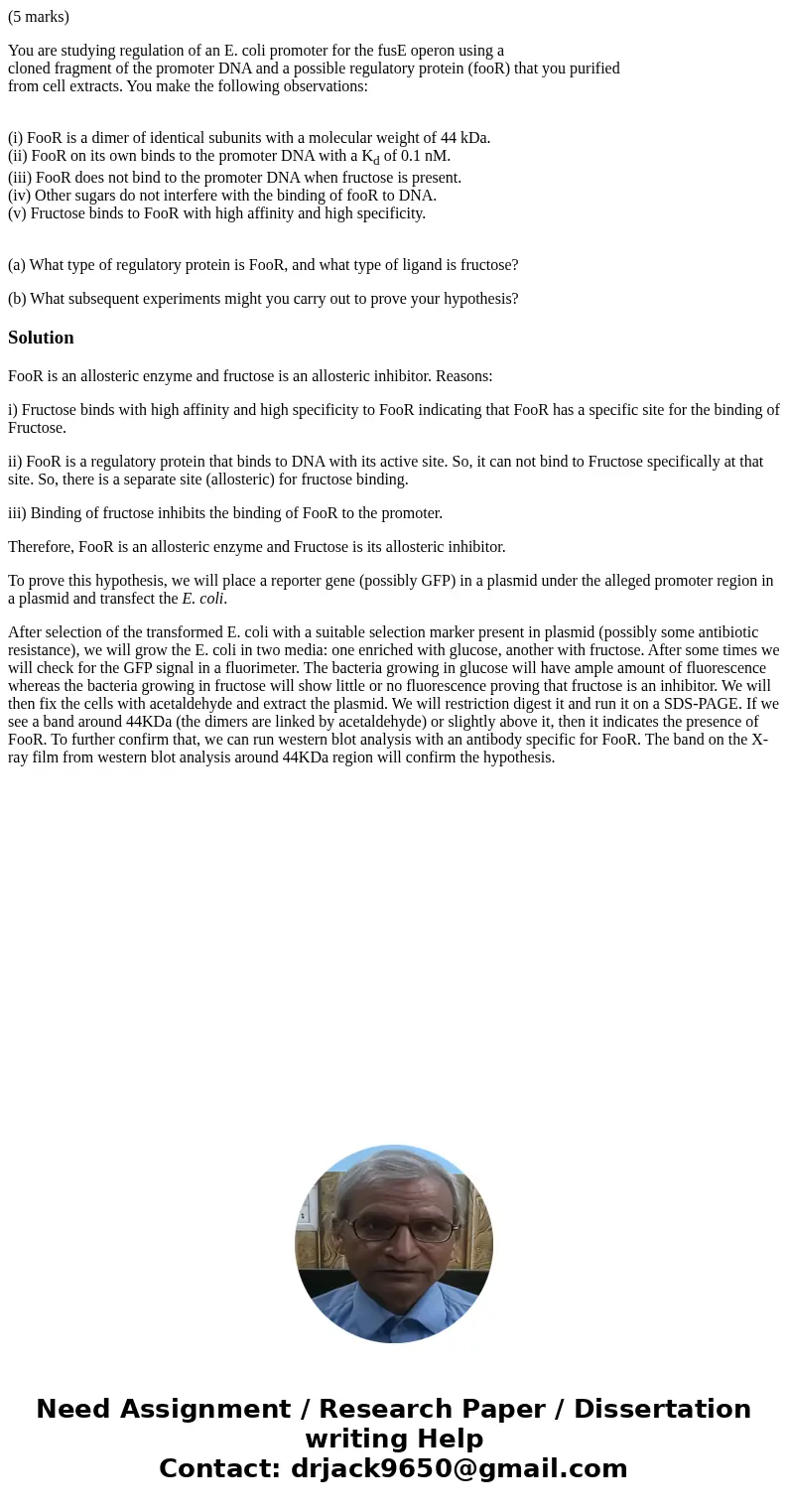5 marks You are studying regulation of an E coli promoter fo
(5 marks)
You are studying regulation of an E. coli promoter for the fusE operon using a
cloned fragment of the promoter DNA and a possible regulatory protein (fooR) that you purified
from cell extracts. You make the following observations:
(i) FooR is a dimer of identical subunits with a molecular weight of 44 kDa.
(ii) FooR on its own binds to the promoter DNA with a Kd of 0.1 nM.
(iii) FooR does not bind to the promoter DNA when fructose is present.
(iv) Other sugars do not interfere with the binding of fooR to DNA.
(v) Fructose binds to FooR with high affinity and high specificity.
(a) What type of regulatory protein is FooR, and what type of ligand is fructose?
(b) What subsequent experiments might you carry out to prove your hypothesis?
Solution
FooR is an allosteric enzyme and fructose is an allosteric inhibitor. Reasons:
i) Fructose binds with high affinity and high specificity to FooR indicating that FooR has a specific site for the binding of Fructose.
ii) FooR is a regulatory protein that binds to DNA with its active site. So, it can not bind to Fructose specifically at that site. So, there is a separate site (allosteric) for fructose binding.
iii) Binding of fructose inhibits the binding of FooR to the promoter.
Therefore, FooR is an allosteric enzyme and Fructose is its allosteric inhibitor.
To prove this hypothesis, we will place a reporter gene (possibly GFP) in a plasmid under the alleged promoter region in a plasmid and transfect the E. coli.
After selection of the transformed E. coli with a suitable selection marker present in plasmid (possibly some antibiotic resistance), we will grow the E. coli in two media: one enriched with glucose, another with fructose. After some times we will check for the GFP signal in a fluorimeter. The bacteria growing in glucose will have ample amount of fluorescence whereas the bacteria growing in fructose will show little or no fluorescence proving that fructose is an inhibitor. We will then fix the cells with acetaldehyde and extract the plasmid. We will restriction digest it and run it on a SDS-PAGE. If we see a band around 44KDa (the dimers are linked by acetaldehyde) or slightly above it, then it indicates the presence of FooR. To further confirm that, we can run western blot analysis with an antibody specific for FooR. The band on the X-ray film from western blot analysis around 44KDa region will confirm the hypothesis.

 Homework Sourse
Homework Sourse